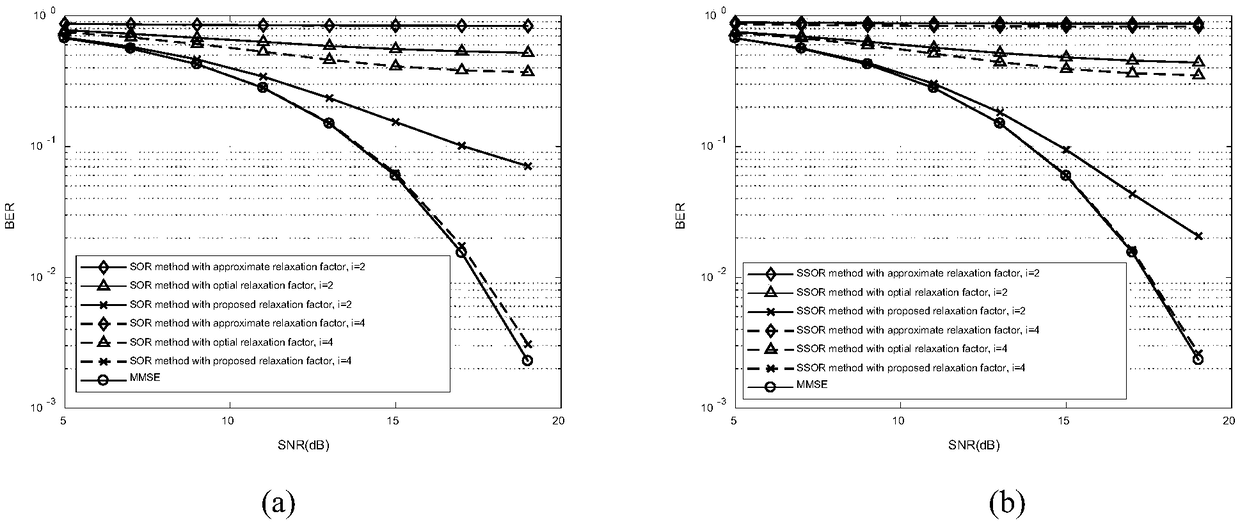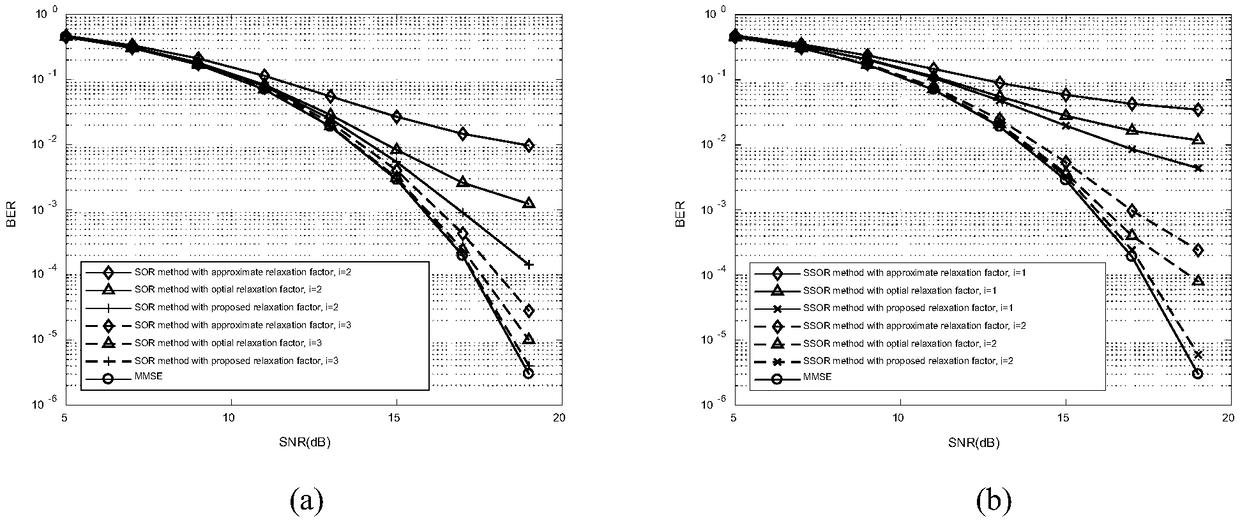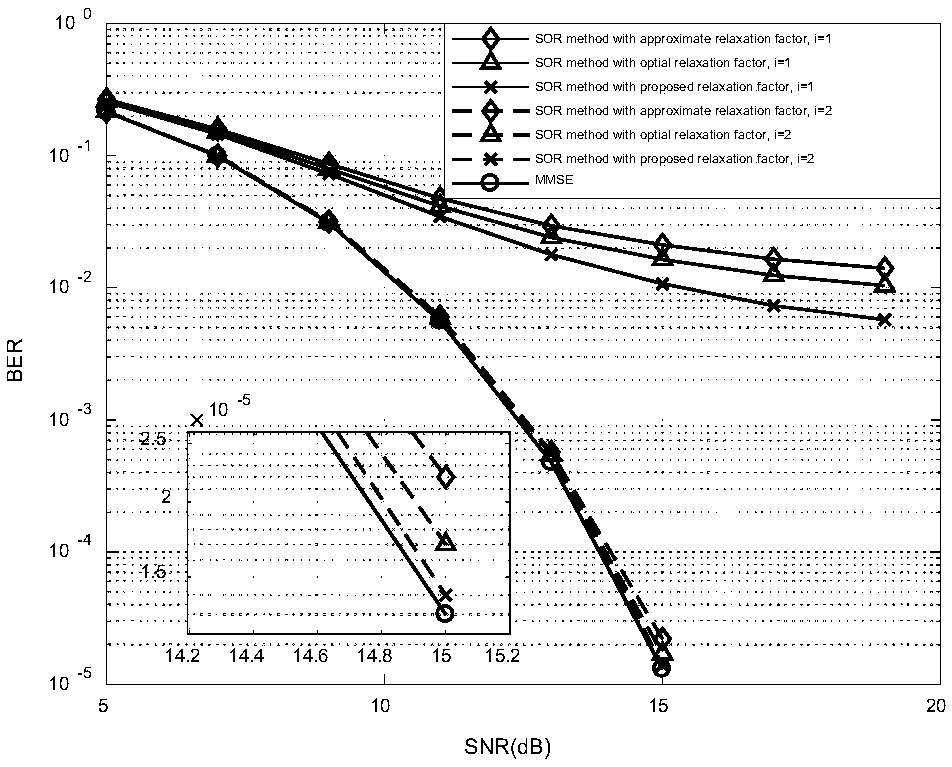Method for selecting relaxation factor of massive MIMO detector
A relaxation factor and detector technology, applied in the field of communication, can solve problems such as the difficulty of optimal relaxation factor, and achieve the effect of significant performance gain
- Summary
- Abstract
- Description
- Claims
- Application Information
AI Technical Summary
Problems solved by technology
Method used
Image
Examples
Embodiment Construction
[0032] Below in conjunction with accompanying drawing and embodiment, describe technical solution of the present invention in detail:
[0033] Consider a massive MIMO uplink system, the base station has N B antennas, simultaneously serving N U single-antenna users. Send the signal after 64QAM modulation The average power of each transmitted symbol is E s , Represents a flat Rayleigh fading channel, therefore, the received signal is
[0034] y=Hx+n, (1)
[0035] where n is the variance σ 2 The additive Gaussian white noise, the signal-to-noise ratio SNR is expressed as N U E. s / σ 2 . The task of signal detection is to recover the sent signal x from the received signal. Assuming that the channel estimation is perfect, a typical MMSE detection algorithm is expressed as
[0036]
[0037] where b=H H y represents the matched filter output of y, is the MMSE filter matrix. The filter matrix A is Hermite positive definite in a massive MIMO system, and when N B >...
PUM
 Login to View More
Login to View More Abstract
Description
Claims
Application Information
 Login to View More
Login to View More - R&D
- Intellectual Property
- Life Sciences
- Materials
- Tech Scout
- Unparalleled Data Quality
- Higher Quality Content
- 60% Fewer Hallucinations
Browse by: Latest US Patents, China's latest patents, Technical Efficacy Thesaurus, Application Domain, Technology Topic, Popular Technical Reports.
© 2025 PatSnap. All rights reserved.Legal|Privacy policy|Modern Slavery Act Transparency Statement|Sitemap|About US| Contact US: help@patsnap.com



